 Kia Rio: Operation and Leakage Check
Kia Rio: Operation and Leakage Check
| Check all of the following items: |
Component
|
Procedure
|
Brake Booster (A)
|
Check brake operation by applying the brakes during a test drive.
If the brakes do not work properly, check the brake booster. Replace the
brake booster as an assembly if it does not work properly or if there are
signs of leakage.
|
Piston cup and pressure cup inspection (B)
|
| •
|
Check brake operation by applying the brakes. Look for
damage or signs of fluid leakage. Replace the master cylinder
as an assembly if the pedal does not work properly or if there
is damage or signs of fluid leakage.
|
| •
|
Check for a difference in brake pedal stroke between quick
and slow brake applications. Replace the master cylinder if
there is a difference in pedal stroke.
|
|
Brake hoses (C)
|
Look for damage or signs of fluid leakage. Replace the brake
hose with a new one if it is damaged or leaking.
|
Caliper piston seal and piston boots (D)
|
Check brake operation by applying the brakes.
Look for damage or signs of fluid leakage. If the pedal does not work
properly, the brakes drag, or there is damage or signs of fluid leakage,
disassemble and inspect the brake caliper. Replace the boots and seals with
new ones whenever the brake caliper is disassembled.
|
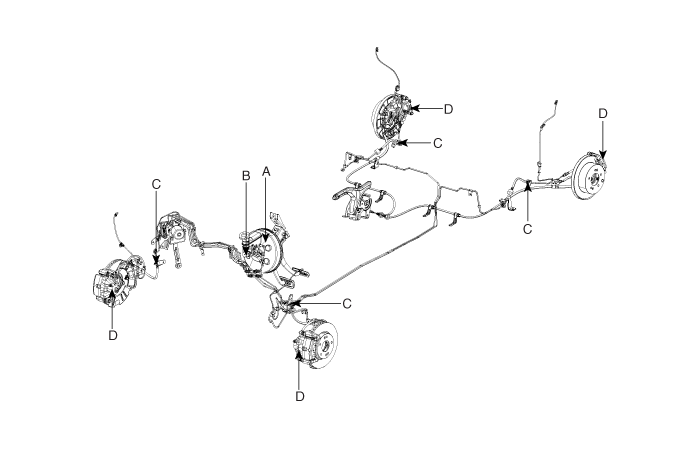
| •
|
Do not reuse the drained fluid.
|
| •
|
Always use genuine DOT3/DOT4 brake Fluid.
Using a non-genuine DOT3/DOT4 brake fluid can cause corrosion
and decrease the life of the system.
|
| •
|
Make sure no dirt or other foreign matter is allowed to
contaminate the brake fluid.
|
| •
|
Do not spill brake fluid on the vehicle, it may damage
the paint; if brake fluid does contact the paint, wash it off
immediately with water.
|
| •
|
The reservoir on the master cylinder must be at the MAX
(upper) level mark at the start of bleeding procedure and checked
after bleeding each brake caliper. Add fluid as required.
|
|
|
1. |
Make sure the brake fluid in the reservoir is at the MAX(upper)
level line.
|
|
2. |
Have someone slowly pump the brake pedal several times, and then
apply pressure.
|
|
3. |
Loosen the right-rear brake bleed screw (A) to allow air to escape
from the system. Then tighten the bleed screw securely.
[Front disc brake]
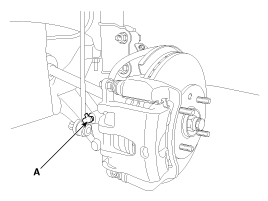
[Rear disc brake]

[Rear drum brake]
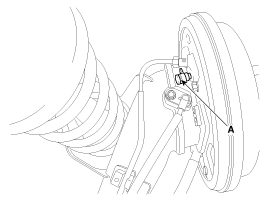
|
|
4. |
Repeat the procedure for wheel in the sequence shown below until
air bubbles no longer appear in the fluid.
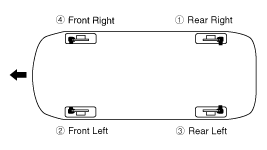
|
|
5. |
Refill the master cylinder reservoir to MAX(upper) level line.
|
ESC Bleeding of Brake System
This procedure should be followed to ensure adequate bleeding of air and
filling of the ESC unit, brake lines and master cylinder with brake fluid.
|
1. |
Remove the reservoir cap and fill the brake reservoir with brake
fluid.
If there is any brake fluid on any painted surface, wash
it off immediately.
|
When pressure bleeding, do not depress the brake pedal.
Recommended fluid........ DOT3 or DOT4
|
|
|
2. |
Connect a clear plastic tube to the wheel cylinder bleeder plug
and insert the other end of the tube into a half filled clear plastic
bottle.
|
|
3. |
Connect the GDS to the data link connector located underneath
the dash panel.
|
|
4. |
Select and operate according to the instructions on the GDS screen.
You must obey the maximum operating time of the ABS motor
with the GDS to prevent the motor pump from overheating.
|
|
(2) |
Select Anti-Lock Brake system.
|
|
(3) |
Select HCU air bleeding mode.
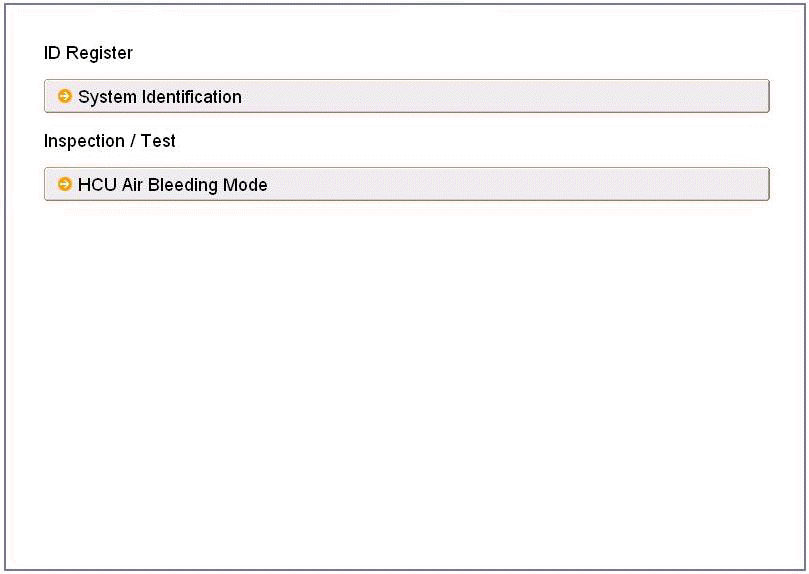
|
|
(4) |
Press "OK" to operate motor pump and solenoid valve.
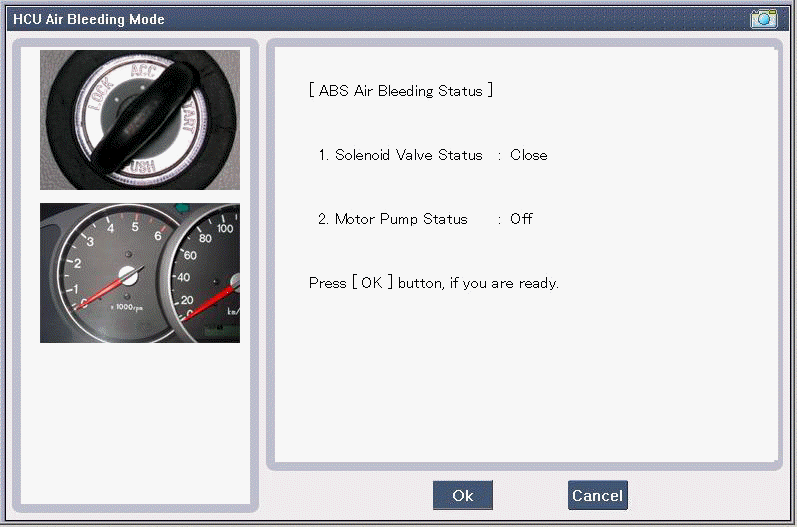
|
|
(5) |
Wait 60 sec. before operating the air bleeding.
(If not, you may damage the motor.)
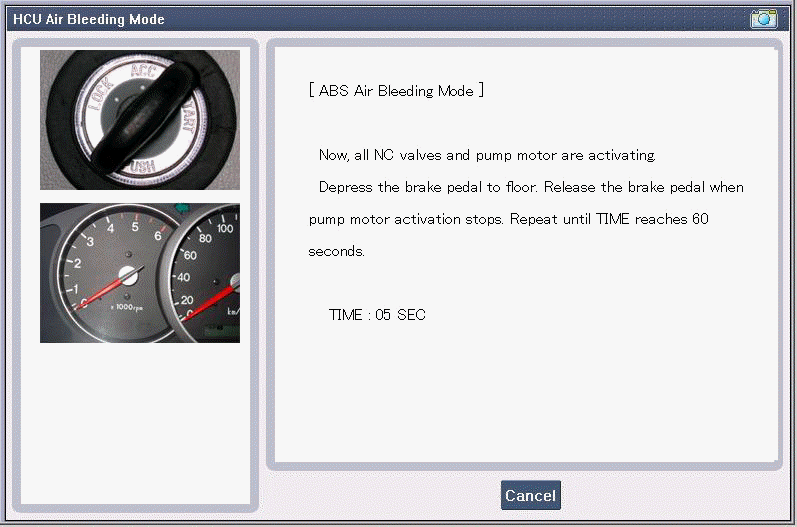
|
|
(6) |
Perform the air bleeding.
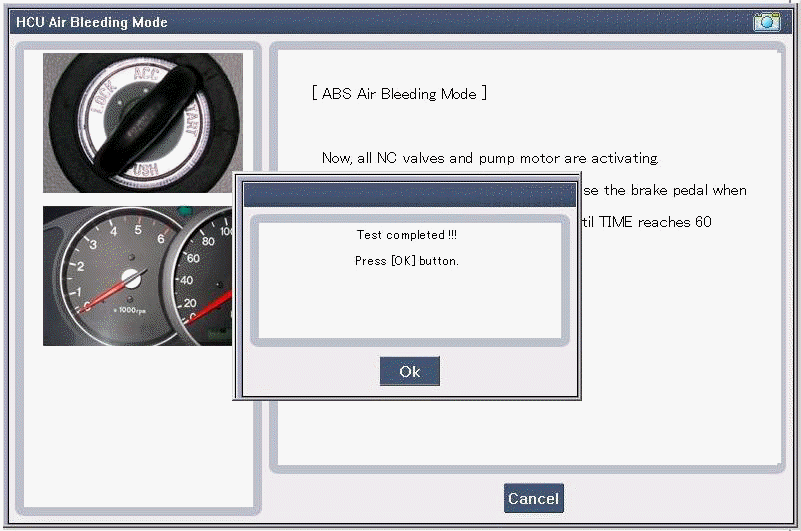
|
|
|
5. |
Pump the brake pedal several times, and then loosen the bleeder
screw until fluid starts to run out without bubbles. Then close the
bleeder screw (A).
Front

Rear

|
|
6. |
Repeat step 5 until there are no more bubbles in the fluid for
each wheel.
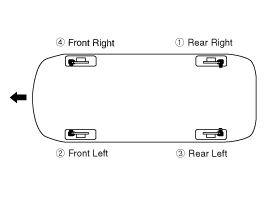
|
|
7. |
Tighten the bleeder screw.
Bleed screw tightening torque:
7 ~ 13 N.m (0.7 ~ 1.3 kgf.m, 5.4 ~ 9.5 lb-ft)
|
|
Problem Symptoms Table
Use the table below to help you find the cause of theproblem. The numbers
indicate the priority of the likecause of the problem. Check each part in order.
...
See also:
Delivery Pipe Removal
In case of removing the high pressure fuel pump, high pressure
fuel pipe, delivery pipe, and injector, there may be inju ...
Troubleshooting
Problem Symptoms Table
Before replacing or repairing air conditioning components, first determine
if the malfunction is due to the refrigerant charge, air flow or compressor.
Us ...
Tire pressure monitoring system
(1) Low tire pressure telltale / TPMS malfunction indicator
Each tire, including the spare (if provided), should be checked monthly when
cold and inflated to the inflation pressure recommended by ...
 Kia Rio: Operation and Leakage Check
Kia Rio: Operation and Leakage Check
 Troubleshooting
Troubleshooting Brake Booster
Brake Booster










